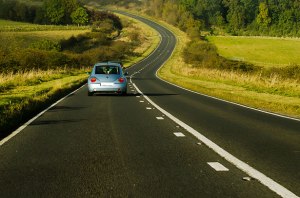Evacuation Plans—Part Two: The 1-Hour Plan—section C

We complete our preparations for the 1-hour evacuation plan this month. To-do items are in bold:
Create a plan/checklist called “Secure Home”. Learn how to do these things and purchase tools as needed. Place a copy of list inside your empty “Additional Wealth” box and in your Evacuation Plans binder. Your list may include:
- Turn off gas and unneeded breakers.
- Turn refrigerator to high—keeps food cold longer.
- Turn off water heater.
- Take steps to prevent pipes freezing if weather dictates: adjust thermostat, turn on taps, or turn off water heater and drain pipes.
- Flush toilets and take out trash.
- Lock windows & doors including garage. Double check!
- Create “Evacuated” signs for main and secondary entrances. Without a sign, emergency personnel will use any means to rescue potential survivors. Write legibly on a full sheet of paper “Everyone Evacuated. Nobody Home Here”, or the like. If you wish, you may also include info such as a phone number where you can be reached or your destination address. Secure in a Ziploc bag or otherwise waterproof and secure to your door(s). Store sign and tape inside empty “Additional Wealth” box.
Now you are ready to print up your complete 1-hour Evacuation Plan. Keep a copy in your purse, tape one inside a kitchen or office cabinet and keep one in your evacuation plans binder. Sample plan below:
- Sound the alarm. Such as “Wildfire approaching! Come to the kitchen for instructions!”
- Communicate. Begin with a family prayer. Make sure children know what the plan is, and what is expected of them. “We are leaving for Aunt Martha’s in 60 minutes. Complete A, B and C and then go sit in the car.” Adults can divide up the rest of the list. Also, contact your destination if possible, let them know you are coming, make a reservation, etc.
- Arrange to collect or meet up with family members who are not onsite. If they will not return home, assign someone to fill their box according to their list.
- Prepare the vehicle. Check fluids, tires, fuel. Do a quick clean of interior and windows. Adjust seating. If applicable, hook up trailer or attach external carriers. Secure additional gas cans outside the body of the vehicle.
- Place 72-hour kits in vehicle.
- Place box of Important Documents in vehicle.
- Place box of Family Records in vehicle.
- Collect “Additional Wealth” on box list. Place filled box in vehicle.
- Everyone fills their personal box with the items on their list and places box in vehicle.
- If there is time and space, collect additional “comfort items”, such as personal pillows, blankets and airbeds.
- Children take seats and buckle up. An older child or adult stays with children.
- Go through your “Secure Home” checklist.
- Securely tape your “Evacuated” signs to your doors.
- Get into your car, say another family prayer and drive to your destination.
(I have drawn HEAVILY on the ideas and recommendations of a Hurricane Katrina survivor for the sections on evacuation. Unfortunately, although his website is an absolute wealth of knowledge, his language is very crude and I don’t feel great about linking directly to it. However, wanting to give credit where credit is due, if you would like to visit his site, run a search on “the place with no name Katrina” and it should be your top result.)
